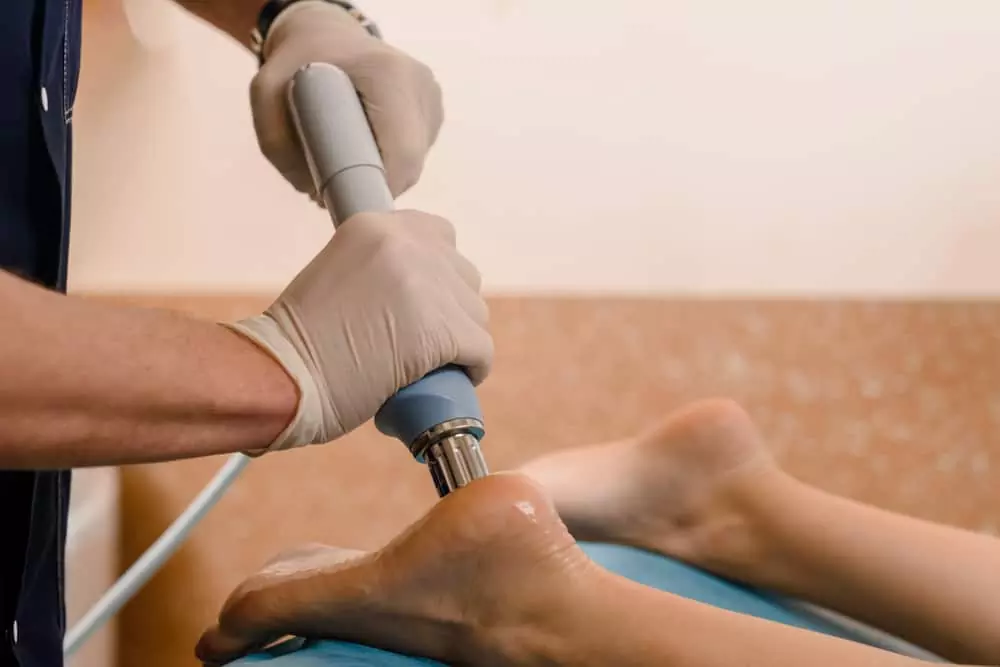
Effective Interventions for Plantar fasciitis
volvesAs physiotherapists, we all know how common foot pain can be among our patients. Plantar heel is a debilitating condition that interferes with daily activities and reduces quality of life. It can result from a variety of factors, including mechanical stress, overuse, and injury.
As healthcare professionals, it’s our duty to provide effective assessment and management strategies for patients. This article will explore the latest research and guidelines on acute management, exercise interventions, and specialist recommendations for plantar heel pain, as well as highlighting other conditions that may mimic or contribute to heel pain.
By following the evidence-based strategies outlined in this article, you will be able to help patients with plantar heel pain to regain mobility, reduce pain, and achieve long-term improvements in their foot health. So, let’s dive in and learn more about this common condition and how we can best treat it.
5 key Take aways
- Assessment for plantar heel pain involves gathering information about symptom history, injuries, and recent activity changes. Palpation of the plantar foot helps identify tenderness and abnormalities. Ankle and foot range of motion is assessed to determine joint limitations.
- Conservative treatments like stretching, taping, and using heel cups or orthotics can be effective in managing plantar heel pain by improving foot mechanics and reducing pressure on tissues.
- Stretching the plantar fascia can be more effective than Achilles tendon stretches for faster healing. Taping or strapping aims to improve proprioception and foot positioning.
- Heel cups and over-the-counter orthotics provide arch support and cushioning but may only address symptoms, not the cause.
- Some modalities like ultrasonography and laser treatment have shown limited benefit in managing plantar heel pain, and exercise-based management is often recommended as the first-line treatment.
Assessing Heel Pain
Subjective assessment determining history & change in activity: Asking the patient questions about their foot and ankle symptom patterns, such as;
- The onset and duration of symptoms
- Any past injuries or surgeries
- Any recent changes in physical activity or footwear.
This information helps to understand the patient’s condition and identify any potential causes or contributing factors to the current foot and ankle issues. For example, if a patient reports a sudden increase in running mileage, it may suggest an overuse injury.
Palpation of plantar aspect of the foot:
Palpation is useful to assess the texture, temperature, and tenderness of tissues. It involves examining the sole of the foot by gently pressing and feeling for any abnormalities or discomfort.
Palpate different areas, including the heel, arch, and balls of the feet. This can help identify areas of tenderness, swelling, or other abnormalities that may indicate plantar heel pain.
You can diagnose plantar heel pain by subjective assessment alone, meaning palpation is not necessary. However, patients tend to be more satisfied with the consultation if there is human touch involved. It helps build rapport and trust, which can help with exercise adherence in the long run.
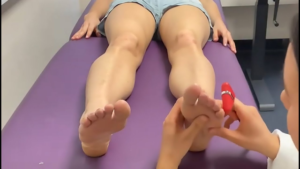
Range of motion of ankle & foot:
Assessing Range of motion (ROM) of the ankle and foot involves moving the joint in various planes and measuring the degree of motion that can be achieved. Combine active (client) ROM and passive (physio) ROM to determine if ROM limitations compared to other side (if any) are due to soft tissue or mechanical block.
For example, limited dorsiflexion (upward movement of the foot) may suggest ankle joint restrictions, while reduced plantar flexion (downward movement of the foot) may indicate Achilles tendon issues.
Other treatment to consider for plantar fasciitis
Conservative treatments such as stretching, taping or strapping, and the use of heel cups or orthotics can be beneficial in managing foot conditions such as plantar heel pain. These approaches aim to improve foot mechanics, reduce pressure on affected tissues, and provide support and stability to the foot. While other modalities may not have significant evidence of benefit and thus are nor recommended
Stretching of the calf muscles and plantar fascia:
Evidence suggests that stretching the plantar fascia may be more effective than Achilles tendon stretches in aiding faster healing. This could be due to the healing processes of ligaments that occur under 3-4 pain level (VAS) loading, which can help promote tissue remodelling and recovery.
Taping or strapping of the foot:
Taping or strapping the foot is often used as a technique to alleviate plantar heel pain symptoms. This technique is not believed to reduce excessive movement, provide structural support to weakened or injured tissues, or alleviate pressure on sensitive areas.
Instead, it aims to improve proprioception, or the body’s awareness of its position in space, which can help improve foot alignment and movement.
However, its effectiveness may vary, as some people may experience placebo effects while others may not. Taping or strapping should be used as a part of a comprehensive treatment plan, including physical exercise, rather than as a standalone treatment
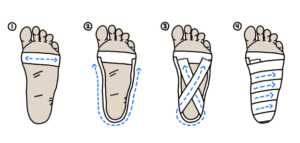
Shockwave therapy:
The meta-analysis in 2020 by Sun and colleagues assessed the effectiveness of Extracorporeal Shock Wave Therapy (ESWT) & compared it to alternative treatments for chronic plantar heel pain. They found that ESWT exhibited better outcomes in various aspects when compared to alternative therapies. Patients who underwent ESWT demonstrated notably higher success and improvement rates, as reflected in the modified Roles & Maudsley (RM) score, reduced pain levels, quicker return to work times, and fewer treatment-related complications than those subjected no treatment.
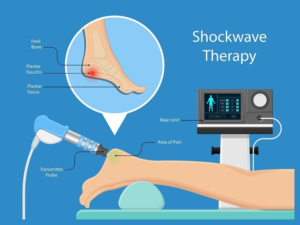
Heel cups and over-the-counter orthotics:
Heel cups and over-the-counter orthotics are devices that are designed to support the natural arch of the foot and provide cushioning to the heel. These devices are typically made of soft or semi-rigid materials and can be inserted into shoes to provide additional support and shock absorption to the foot.
They do not provide a definitive solution for foot conditions but can help with symptom reduction by redistributing pressure, reducing excessive pronation (inward rolling of the foot), and/or improve foot mechanics. Study has found that foot orthotics help to reduce symptoms as much as physical exercise and can be used as an alternative method for un-motivated and un-adhering clients. This however may only address the symptoms but not the cause and thus exercise based management is recommended as first line treatment.
Lack of significant benefit from other modalities:
While there are various treatment modalities that have been explored for foot conditions, such as ultrasonography, laser treatment, iontophoresis (a technique that uses electric current to deliver medication through the skin), or exposure to an electron-generating device, studies have found limited or no significant benefit from these modalities in managing plantar heel pain. The evidence for their effectiveness is often inconclusive or mixed, and they may not be considered as first-line treatments.
Early management
Include such exercises/physical treatment when clients have high irritability and/or severity. You may want to gently introduce the program and always start off slowly with the first week being an introductory week to avoid excessive load on tissue.
Highlight the importance of quality over quantity. As the weeks pass increase frequency, load and/or reduce rest times. Each client is different and thus your clinical judgement and expertise will determine the load parameters.
- Walking bare foot
- Walking on tip toe | back & forward
- Walking on heel | Back & forward
- Light jogging bare foot
- Plantar fasciae stretch in the morning and after prolonged period of inactivity – 10 secs / 10 sets
5 exercise that target rehabilitation of plantar heel pain
Seated & standing Heel raise with towel underneath bog toe – More importantly seated due to soleus higher cross-sectional area & forces it absorbs.
- Double leg (3 sets / 20-25 reps)
- Squats (3 sets/8-20 reps)
- Single leg balance (3 sets/ 60 sec)
- Wall tibialis anterior curls (3 sets/15 reps)
Calf stretch – Diagonal to mimic the natural rigidness of the mid foot (creates a firm lever to propel from) & to take away force applied to the plantar fascia
Equipment used:
- Kettle bells
- Barbell
- box
Guidelines Summarised
Notes on their clinical effectiveness/relevance. Visit NICE website for an in depth look
- Rest the foot to avoid standing or walking for long periods of time.)
- Wear shoes with good arch support and cushioned heels, such as laced sports shoes, and avoid walking barefoot.
- Consider purchasing insoles and heel pads to correct foot pronation, avoiding “magnetic” devices.
- If overweight or obese, consider losing weight to reduce the strain on the plantar fascia.
- Apply icepacks covered with a towel to the foot for 15-20 minutes for symptomatic relief.
- Try self-physiotherapy to stretch the plantar fascia and relieve symptoms.
- Refer to a podiatrist or physiotherapist if self-care advice and self-physiotherapy are not effective after a few months.
- Consider earlier referral to a specialist for people with more severe symptoms, such as extracorporeal shockwave therapy or surgical division of the plantar fascia.
- Most people with plantar fasciitis make a complete recovery within a year. Patient information is available from the NHS website (www.nhs.uk).
Other conditions to be aware of
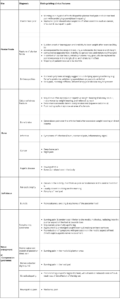
Summary of article
- Foot pain can significantly impact daily activities and requires effective management by healthcare professionals.
- Plantar heel pain can be caused by mechanical stress, overuse, injury, and other factors.
- Physiotherapists use subjective assessments, palpation of the plantar aspect, and ankle/foot range of motion evaluation to determine causative factors.
- Conservative treatments like stretching, taping, heel cups, and orthotics are effective for managing foot conditions like plantar heel pain.
- Modalities such as ultrasonography, laser treatment, iontophoresis, and electron-generating devices have limited or no significant benefit in managing plantar heel pain.
- In acute management, physiotherapists may employ exercises and physical treatments to improve mobility and reduce pain.
- Avoiding excessive loading and prioritizing quality over quantity is crucial in the treatment process.
- Load parameters are customized for each patient based on the clinical judgment and expertise of the physiotherapist.
Sources:
- Buchbinder, R., 2004. Plantar fasciitis. New England Journal of Medicine, 350(21), pp.2159-2166.
- Digiovanni, B.F., Nawoczenski, D.A., Malay, D.P., Graci, P.A., Williams, T.T., Wilding, G.E. and Baumhauer, J.F., 2006. Plantar fascia-specific stretching exercise improves outcomes in patients with chronic plantar fasciitis: a prospective clinical trial with two-year follow-up. JBJS, 88(8), pp.1775-1781.
- Digiovanni, B.F., Nawoczenski, D.A., Malay, D.P., Graci, P.A., Williams, T.T., Wilding, G.E. and Baumhauer, J.F., 2006. Plantar fascia-specific stretching exercise improves outcomes in patients with chronic plantar fasciitis: a prospective clinical trial with two-year follow-up. JBJS, 88(8), pp.1775-1781.
- Landorf, K.B., Keenan, A.M. and Herbert, R.D., 2006. Effectiveness of foot orthoses to treat plantar fasciitis: a randomized trial. Archives of internal medicine, 166(12), pp.1305-1310.
- Rathleff, M.S., Mølgaard, C.M., Fredberg, U., Kaalund, S., Andersen, K.B., Jensen, T.T., Aaskov, S. and Olesen, J.L., 2015. High‐load strength training improves outcome in patients with plantar fasciitis: A randomized controlled trial with 12‐month follow‐up. Scandinavian journal of medicine & science in sports, 25(3), pp.e292-e300.
- Rathleff, M.S., Mølgaard, C.M., Fredberg, U., Kaalund, S., Andersen, K.B., Jensen, T.T., Aaskov, S. and Olesen, J.L., 2015. High‐load strength training improves outcome in patients with plantar fasciitis: A randomized controlled trial with 12‐month follow‐up. Scandinavian journal of medicine & science in sports, 25(3), pp.e292-e300
- Sun, K., Zhou, H. and Jiang, W., 2020. Extracorporeal shock wave therapy versus other therapeutic methods for chronic plantar fasciitis. Foot and Ankle Surgery, 26(1), pp.33-38.
- Yildiz, S., Sumer, E., Zengin, H.Y. and Bek, N., 2022. Intensive physiotherapy versus home-based exercise and custom-made orthotic insoles in patients with plantar fasciitis: Pilot study. The Foot, 51, p.101906.




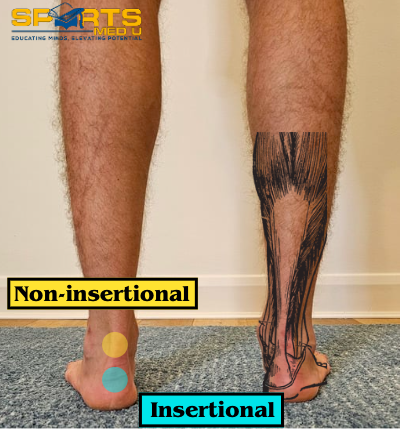
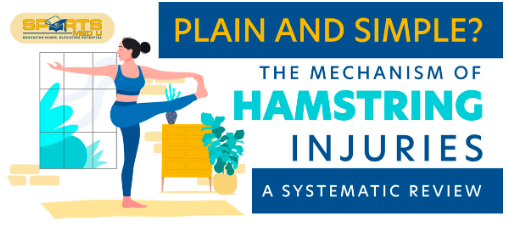
Leave a Reply